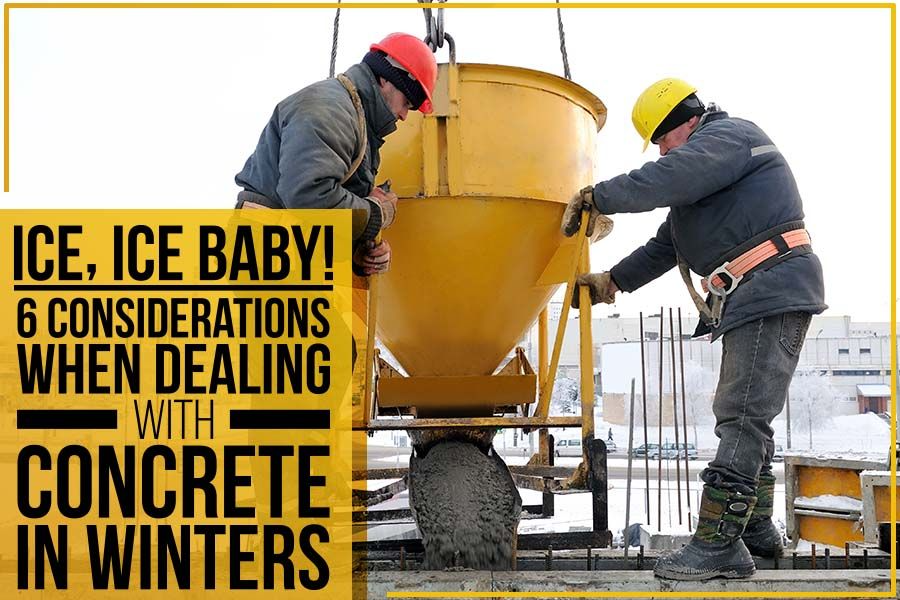
Let’s begin with an introductory science lesson; water expands when the temperature goes down to 39F and becomes ice. This causes the water particles to take up more space between them and behave differently from the hydrating properties of liquid water. Concrete is bound by water-based cement and requires liquid water to activate its chemical cementing properties until it reaches a particular compressive strength, after which nothing can compromise its setting. However, this can take a while in colder temperatures, plus lead to crumbly concrete if the temperatures caused it to freeze.
In El Paso and across Texas, the winter temperatures can reach 32F and below with cold winds that don’t make ideal conditions for both fresh asphalt and concrete. But some emergencies may call for a pouring or overlay job in the cold season. There are specific tweaks that can work to your advantage in such conditions, and we will list out a couple to help you understand why.
It helps to know these tricks when you are a concrete pouring contractor or even a DIY property owner who wants a few quick additions to spruce up the property like a jack of all trades!
- Use hot water in preparing your concrete mix. 65F is a suitable temperature for mixing with consideration to the thickness of the concrete mix.
- Ensure a wet concrete mix of a measured consistency and fluidity for winters, and have it pumped out through an air-entraining system. Air entrainment adds bubbles to the concrete mix that provides stress relief and resistance to frozen or thaw conditions upon solidification.
- Calcium chloride, a type of salt that is very friendly with water, is used as an accelerator in concrete during cold weather. The calcium chloride speeds up the hydration reaction when mixed in as 2% of the whole concrete batch. However, care needs to be taken as this method is unsuitable for use in rebar concrete, as the calcium chloride in the concrete will corrode the steel over time. Just don’t think this is an anti-freeze solution; it’s just a way to speed up the concrete setting time in the cold and can go wrong!
- All fresh concrete ‘bleeds’. This is the process where the poured concrete expels excess water to its surface, and it needs to evaporate. In winters, this is difficult if the bleed water freezes. It is a hassle, but using sponges and wet vacuums can ensure suitable surface drying for further leveling.
- Avoid fly ash or water reducers in cold weather concrete. It will only make the conditions worse for settling the concrete.
- Once the concrete is poured and leveled, it’s time to get an entire baby care kit set up for the next 48 hours to ensure the concrete will cure properly. You will need insulation blankets that keep the temperatures up to 50F. You can also use containment units placed over the poured sections with a ventilated heater.
If you’ve kept these points in mind, you can easily avoid most mistakes people make with cold-weather concrete pouring. At Straight Edge Contractors, we know best the amount of blankie-love your new concrete needs. While the weather in El Paso is ideal for conventional concrete paving, if ever needed, you can rely on our residential and commercial services come winters too! If you desire a consultation, check our free estimates, and you sure won’t be disappointed!



